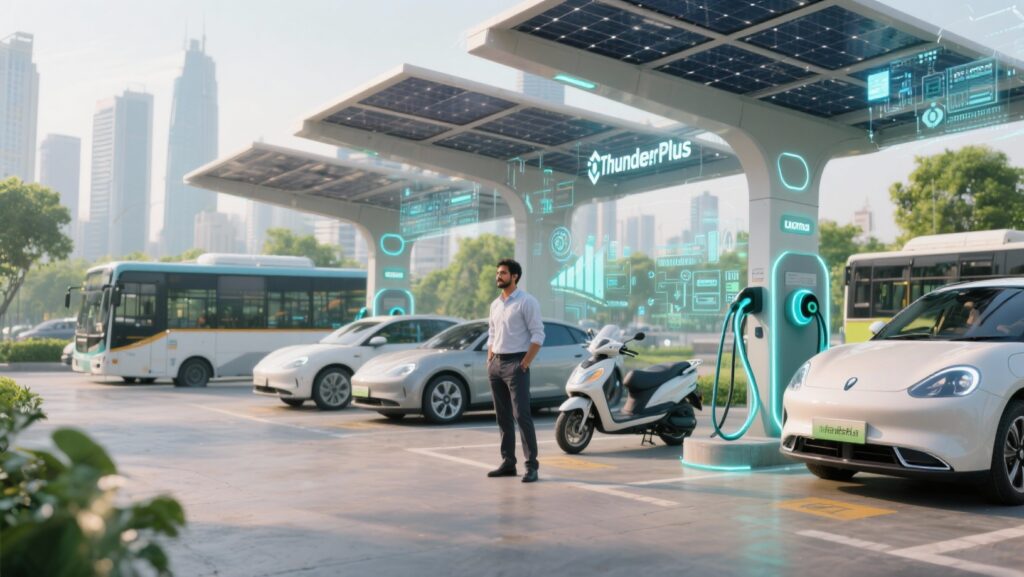Electric mobility is no longer a distant vision; it is accelerating on Indian roads right now. Spiralling EV registrations across two-, three- and four-wheeler segments are fuelling demand for reliable places to plug in, creating an exciting business avenue for anyone ready to invest in charging infrastructure. This guide walks you through every stage of the journey—from understanding the market forces behind the boom to running day-to-day operations and planning the next phase of growth—so you can launch and expand a thriving charging station enterprise.
Understanding the EV Charging Station Business Landscape
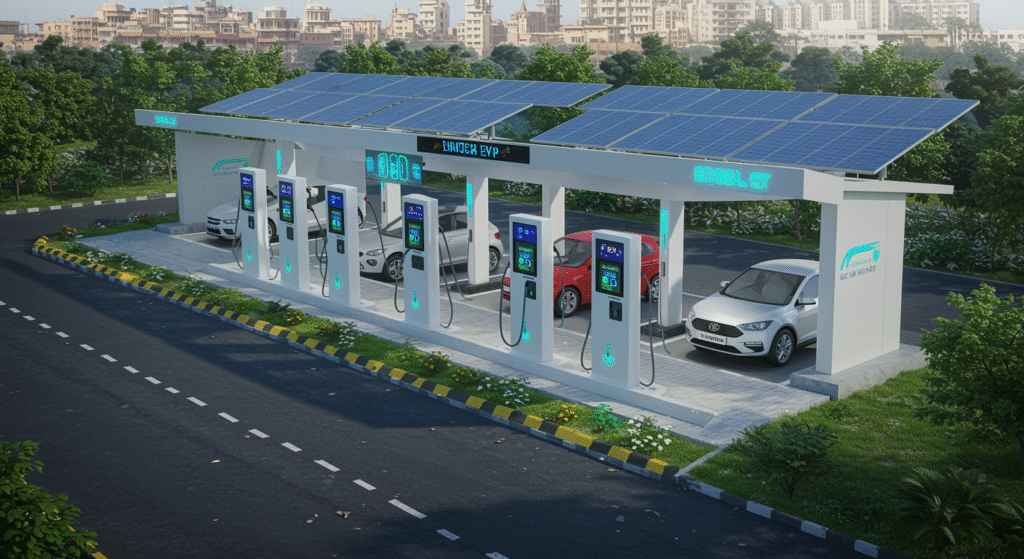
Battery-powered vehicles cannot flourish without dependable public charging. Charge Point Operators (CPOs) bridge that gap by installing, operating and maintaining chargers, managing payments and often offering a mobile app that shows live availability. In India, several CPOs—such as Servotech, Tata Power, Statiq, Charge Zone, Magenta ChargeGrid and Jio-bp Pulse—have already deployed sizeable networks and demonstrated viable business models.
Rising vehicle numbers confirm the direction of travel. Government incentives and mounting environmental awareness pushed electric two-wheeler registrations from 73,651 in December 2024 to 97,734 a month later. Electric four-wheelers climbed from 9,116 to 11,247 over the same period. NITI Aayog projects that EVs will command a 30 percent market share by 2030, yet range anxiety persists because chargers remain scarce in many city centres, highways and Tier-2 or Tier-3 towns. Your station can remove that anxiety, unlock further vehicle sales and earn recurring revenue in the process.
Business Models and Revenue Streams
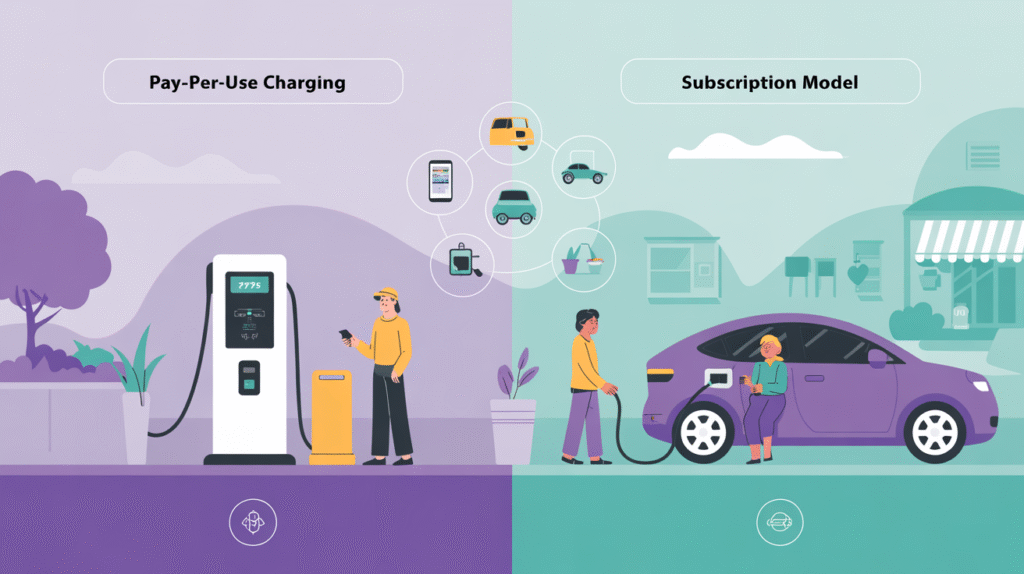
Before laying a single cable, decide how the station will earn its keep. Two proven models dominate today:
- Pay-Per-Use – Drivers pay only for the kilowatt-hours they consume, plus a nominal service fee. This à-la-carte approach attracts casual users and interstate travellers.
- Subscription – EV owners pay a weekly or monthly fee for unlimited charging across your network. The predictable income helps you forecast cash flow and recover capital faster, especially in urban clusters with high utilisation.
You can bolster either model with complementary revenue sources. Fleet partnerships lock in bulk energy sales from corporate delivery vans, taxis or shared-mobility operators. The charger’s display units and surrounding real estate can host advertising that reaches a sustainability-minded audience. If you add a convenience store or café, dwell times of 20–40 minutes during DC fast-charging translate into ancillary retail sales—a strategy already boosting margins at several leading CPOs.
Setting Up an EV Charging Station
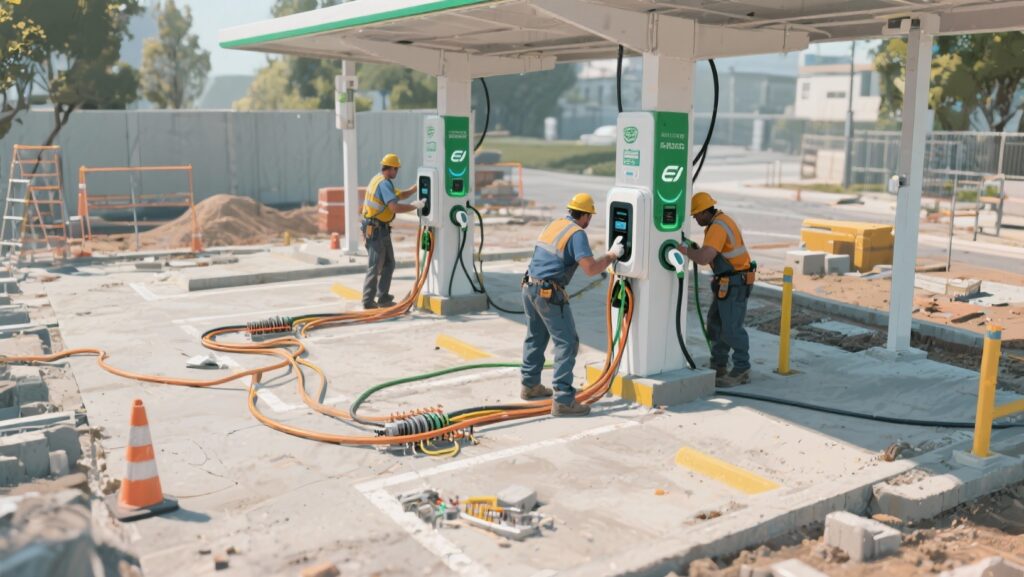
Capital outlay
A turnkey franchise typically costs ₹1–2 Crore. The figure covers civil works, electrical upgrades, smart metering, chargers (both AC slow and DC fast), management software and initial marketing. While the ticket size appears steep, government subsidies and low-interest green loans can trim the upfront burden, and well-utilised chargers often reach break-even within three to five years.
Location, location, location
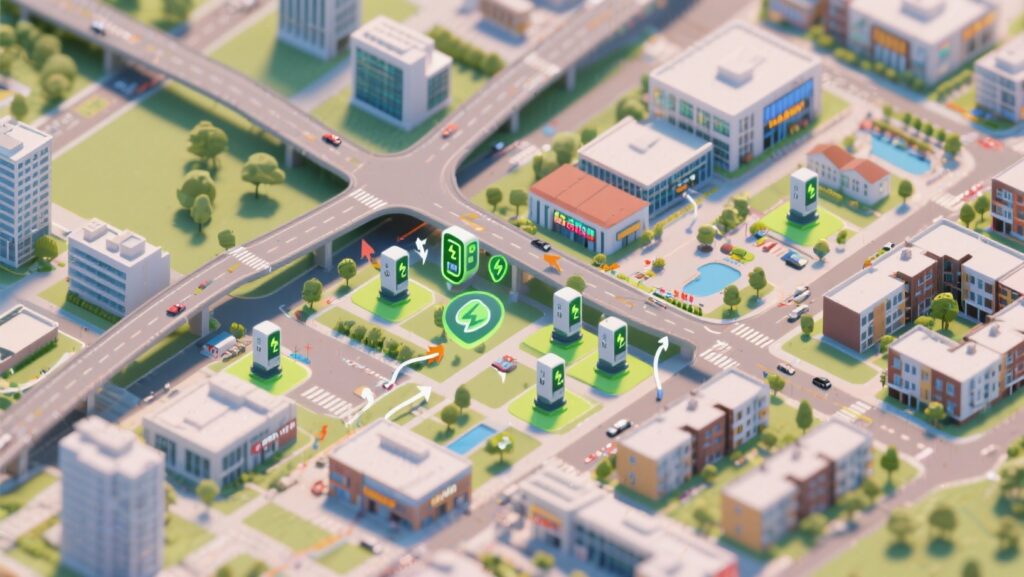
Choosing the right site is the single most decisive factor in your future revenue. Aim for places with consistent footfall and lingering dwell times—highways, business parks, shopping malls, rehousing car parks or even mixed-use residential complexes. Study local vehicle density and traffic flows. A charger tucked behind an obscure warehouse will stay idle, while one visible from the main carriageway invites spontaneous top-ups and word-of-mouth promotion.
Hardware mix
Slow (AC) chargers cost less and suit overnight parking or office campuses where vehicles remain for hours. Fast (DC) chargers require heavier electrical infrastructure yet can replenish most passenger cars in under an hour and therefore generate more daily sessions. A blended site—two or three AC sockets for employees and two DC guns for the public—spreads your risk and captures diverse user segments, including fast-charging Thunderplus owners who demand rapid turnarounds.
Networking and software
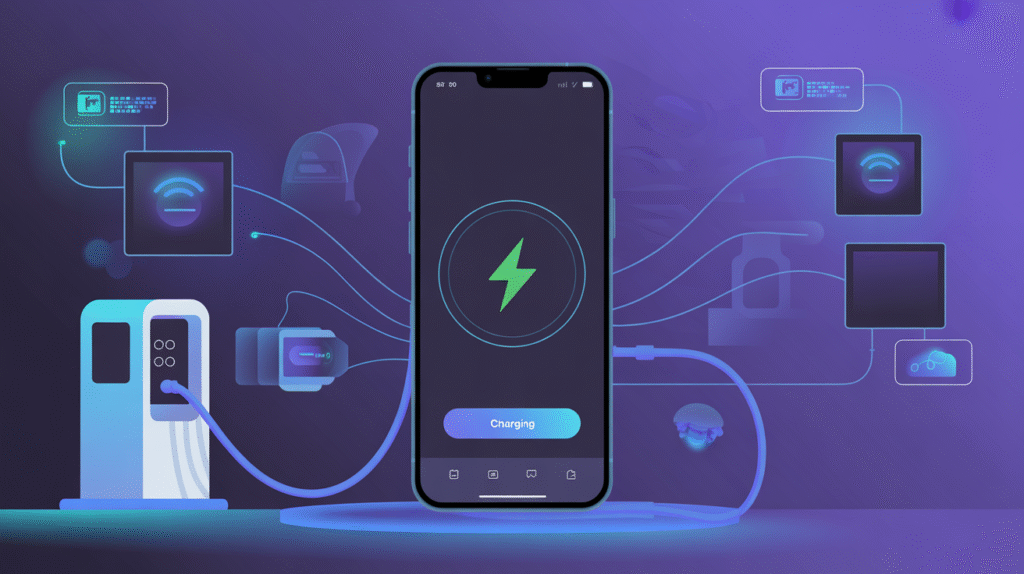
Each charger needs smart load management, remote diagnostics and a seamless payment gateway. Many entrepreneurs partner with established network service providers who bundle these functions into a white-label app. Doing so avoids the time and cost of building proprietary software while still letting you brand the user interface.
Legal and Regulatory Framework
You do not need a petrol-pump-style licence to sell electricity to EVs. In fact, the Ministry of Power encourages private participation and has issued phase-wise guidelines that simplify deployment. Your obligations focus on compliance:
- Technical standards – Install equipment certified for safety and interoperability. Ignore this and insurers may refuse cover.
- Approvals – Local discom connections, municipal permissions for signage and, where relevant, highway authority clearances.
- Incentives – Central and state governments currently offer tax holidays, capital subsidies and concessional land leases for green-mobility infrastructure. Applying early maximises your subsidy window and lowers interest costs.
Operational Considerations and Partnerships
Smooth operations cement a station’s reputation. Begin with robust civil works and an electrical backbone capable of future expansion; ripping up fresh tarmac in year two costs more than over-sizing conduits today. Preventive maintenance, from cable inspections to software updates, protects uptime and revenue.
You can simplify the task by signing a comprehensive maintenance contract with your hardware vendor or a specialised CPO. Network partnerships also extend visibility: when your chargers appear on a popular booking app, utilisation rates rise because drivers can reserve a slot en route and see real-time status.
Power reliability remains another priority. Where feasible, a rooftop solar array paired with battery storage provides green backup and trims electricity bills. In areas prone to outages, solar-hybrid configurations keep chargers live, safeguarding both revenue and brand image.
Opportunities for Growth and Expansion
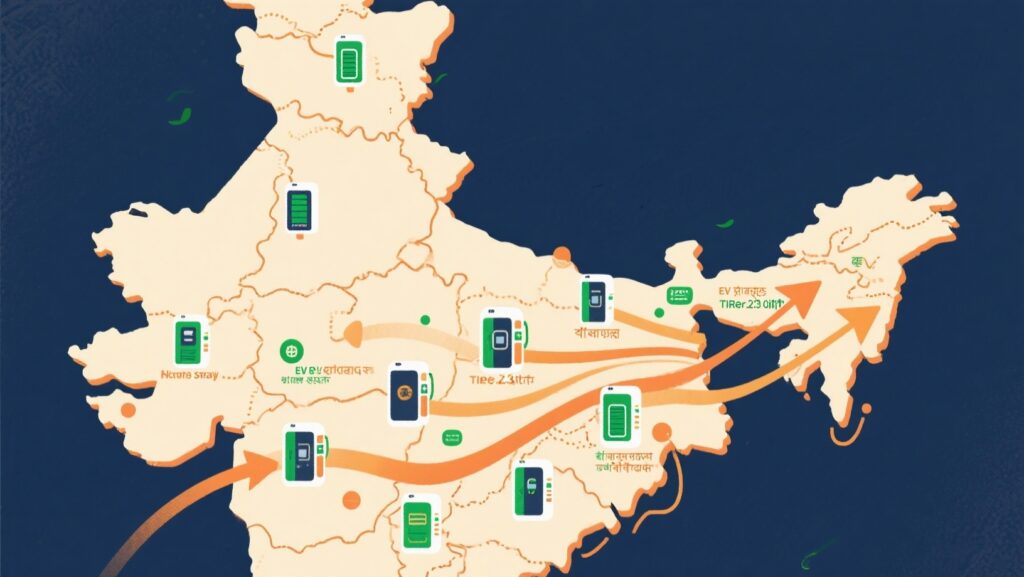
Early movers often secure the best sites and customer loyalty, but growth need not stall once the first station goes live. You can scale in three strategic ways:
- Fill white spaces – Tier-2 and Tier-3 cities still suffer acute charger shortages. Conduct traffic counts, map competing facilities and identify underserved corridors before a rival arrives.
- Diversify services – Jio-bp Pulse has demonstrated how battery-swapping for two-wheelers or e-rickshaws alleviates range anxiety for high-utilisation fleets. Adding a compatible swapping cabinet broadens your customer base without cannibalising plug-in revenue.
- Collaborate – Established players such as Tata Power frequently co-brand sites with independent entrepreneurs, supplying equipment, software and bulk electricity rates while leaving day-to-day operations in local hands. Piggybacking on their reputation can accelerate customer trust and footfall.
Keep one eye on policy developments. As subsidies evolve and new safety standards emerge, promptly adapting your network keeps you competitive and compliant.
Frequently Asked Questions
Q1. How to start an EV charging station business?
Begin by studying local EV adoption, choosing a high-traffic site and drafting a financial plan that covers equipment, civil works and operating costs. Secure utility approvals, tap into available subsidies and partner with a network provider for software and billing, then install a mix of AC and DC chargers before launching a targeted marketing campaign.
Q2. What is charging station business cost?
A full-service franchise in India generally requires ₹1–2 Crore, which includes land preparation, grid upgrades, multiple chargers, management software and contingency funds. Government incentives and low-interest green loans can reduce the effective outlay.
Q3. How do I decide between subscription and pay-per-use pricing?
Analyse local usage patterns: urban commuters who charge daily often prefer a flat subscription, while occasional highway users lean towards pay-per-use. Offering both options lets customers choose and maximises station utilisation.
Q4. What extra revenue can I earn apart from selling electricity?
Strategic partnerships with fleet operators guarantee steady charger utilisation. Advertising panels, a café or a small convenience store monetise driver dwell time, boosting profit margins without large additional investment.
Q5. My station is in a power-outage-prone area. How can I maintain service continuity?
Consider a solar-plus-battery setup that supplies critical loads during grid failures. Regular preventive maintenance and remote monitoring further reduce unplanned downtime.
Q6. Does adding fast (DC) charging always make sense financially?
Fast chargers attract high-end users and deliver more daily sessions, but they also cost more and draw heavier grid power. Weigh the expected traffic density and tariff structure; in zones with moderate EV flow, a balanced AC/DC mix often yields the best return on investment.
If you’re considering entering the EV charging station business, explore how ThunderPlus can guide you in choosing the right charging solutions tailored to your market needs. Visit us at thunderplus.io to learn more about our franchise models and charging units!


